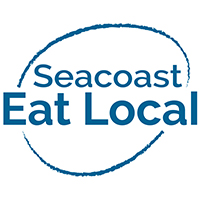Does Great Bay need more oyster farms or jet skis?
Our mission at Seacoast Eat Local is to help people to eat more locally grown food. A diverse landscape of farms in the Seacoast is a lofty goal and it needs steady encouragement. Here’s a case of a local oyster farm on Great Bay that needs your help.
Many land-owners say Not In My BackYard to farms, but if we all said that there would be nothing but suburban sprawl on the beautiful NH Seacoast. Oyster farming, like organic farming, has the added benefit of improving the environment. Please help us out by signing this petition now.
Still not convinced? Let’s hear more evidence from the local small farmer:
Written by Troy Payne of NESO,
Fun Fact: The Great Bay Estuary is one of only 29 major estuaries in the United States. Collectively, these 29 sites provide nursery habitat for about 75% of all seafood harvested in the US. So, like damn, lets keep those around.
http://nhpr.org/post/nhs-
Maybe you caught this [link above] NPR piece last month with Rachel Rouillard of the Piscataqua Region Estuary Partnership (PREP,) a joint program between local, state and federal agencies established under the Clean Water Act with the goal of protecting and enhancing nationally significant estuarine resources, like Great Bay. Rachel is PREPs Executive Director and was delivering a summary of their latest report on the health of our bay and the news isn’t good. In a nutshell, the ecosystem is in crisis, it is in decline, and it lacks the resilience to recover on its own.
It turns out that oyster populations, whose occurrence in natural beds in Great Bay numbered 25 million individuals as recently as 1993, have been decimated to the point where current populations are estimated to number fewer than 2 million. Want to guess what one of the leading indicators of estuary ecosystem resilience is. Sure, it’s oysters. That’s because oysters suck – literally. A single healthy adult oyster can filter as much as 50 gallons of water a day. The daily filtration of those 23 million missing oysters would approach 6 billion gallons, or roughly a tenth of the volume of the entire 60 billion gallon estuary at high tide. That kind of daily cleanup power would help to stabilize the delicate biochemical and symbiotic species dance that underpins the health of the whole estuary by absorbing spiking influxes of runoff contaminants from the more than 1000 square miles of estuary watershed. But they’re gone, so they don’t. And pretty much every other species that relies on that missing stabilization is suffering.
Heroic oyster bed restoration efforts are underway in the bay and have been for years, but natural beds are susceptible to oyster parasites which can thrive more readily in a resilience challenged environment. On the other hand, oyster farming practices are much less impacted by these parasites since the adult oyster are regularly removed to market and replaced with new cultured spat. So it’s win-win. Oyster farms keep growing out and removing adult oysters, which keeps the filters operating in the bay, in a way that natural beds can’t.
So with all this information well understood by every scientist, academic, and environmental stakeholder in the Great Bay ecosystem, you have to wonder why oyster farmers are having difficulty getting permitting applications approved by the New Hampshire Fish and Game Department for open oyster sites in the estuary.
Meet New England Superior Oyster (NESO,) the little oyster farm with the big name. They’ve invested in an old pontoon boat platform on which to do their oystering work, and purchased enough materials to build out fifty or so oyster cages and bags, and they have more than enough passion for the environment, to work at a local and sustainable scale. The one thing the don’t have is a permit to put oysters in the bay near the south end of their fields on Royalls Cove at the mouth of the Bellamy River.
Though they have applied multiple times over nearly two years past, a small but vocal group group of condominium and homeowners across the water are opposed to the project. So much opposed in fact that they have started a petition to keep oyster farming entirely out of Royalls Cove (which contains about 10% of all available space open to oystering in the estuary.) Their concerns, as stated in their petition are, their property values, their recreational access to the entire cove, their views, and murkily, their quality of life.
In self-defense, NESO has started it’s own petition asking Fish and Game to share the use of the cove, and to prioritize projects with significant environmental benefit over those with little or none. We support this initiative based on it’s value to the entire estuary community rather than a small group trying to reserve a part of this rare and precious resource for their own use. Visit the petition website here (http://chn.ge/2myBBmj) to read more about the issue and sign the petition if you agree. If you choose to sign, you can then scroll to the bottom of the page and open the Reasons for Signing section and leave a comment about why you signed. The “why” is optional and need not be elaborate, but as we understand it, they are strongly weighted over “bare” signatures.
